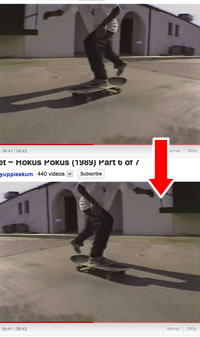The Office of National Drug Control Policy under Bush, led by John Walters, was notorious for flat-out lies and evidence bending, especially regarding cannabis (it was a holy culture war for Ashcroft as well), but under Obama the office has mostly put focus on prescription drug abuse and “drugged driving”.
With 2012 bringing a host of cannabis-related ballot initiatives to voters, Walters’ style of deception is making a comeback. Look at this editorial.
Data also reveal that marijuana potency has almost tripled in the past 20 years. This is especially troubling for use among teens because the earlier a person begins to use drugs, the more likely they are to develop a more serious abuse and addiction problem later in life.
No studies I’m aware of link an increase in THC potency to anything mentioned in the second sentence. Also note that cannabis regulation could actually dictate potency, and kids are getting pot earlier under the current policy. The irony here is that higher THC potency reduces the amount of smoking (a good thing) the user needs to do to achieve the desired level of intoxication.
Would marijuana legalization make Tennessee healthier or safer? One needs to look no further than Tennessee’s current painful experience with prescription drug abuse.
Prescription drugs (generally highly pure synthetic opiates) are not cannabis.
…prescription drugs are legal, regulated, and taxed — and yet rates of the abuse…
Proposed cannabis regulation is generally not by prescription, so this sentence seems purely a distraction. Prescription drugs are scary!
Nationally, someone dies from an unintentional drug overdose — driven in large part by prescription drug abuse — on average every 19 minutes.
Prescription drug abuse is deadly, and is not cannabis use. Surely he forgot to mention cannabis is practically non-toxic.
What would America look like if we had just as many people using marijuana as we currently have smoking cigarettes, abusing alcohol, and abusing prescription drugs?
Why would we have that? It’s true that legalized cannabis would broaden the base of users, but there’s just not a lot of reason to cue scary music.
The bottom line is that laws that control substances have had a real and lasting effect on keeping drug use rates relatively low.
A gem of truth! Prohibition does reduce use, which is only one of many metrics by which you should judge public policy. We could certainly reduce alcohol use, premarital sex, masturbation, swearing, blasphemy and other ills by making them all illegal and giving police endlessly increasing funding and power to stamp them out.
Moreover, other addictive substances like alcohol and tobacco, which are already legal and taxed, cost much more in social costs than the revenue they generate.
It’s true, drugs that are not cannabis are not cannabis, and alcohol excise taxes should be raised considerably. Why has the ONDCP never taken up this cause? As Mark Kleiman put it, a drug policy that ignores alcohol is like a naval policy that ignores the Pacific. Further, you’ll not find a study that shows cannabis causes more damage than alcohol/tobacco.
This isn’t to say that we believe we can arrest our way out of our nation’s drug problem.
AFAIK in no way has the ONDCP or DEA promoted any policy that would lead to fewer arrests, and the federal grant programs that built up local drug task force militarization are still in place (with a nice boost in the stimulus act).
[blah blah diversion treatment programs]
Yes, a small percentage of daily cannabis users will find it difficult to quit, experiencing problems with sleeping, mood, and discomfort (think quitting tobacco). IMO introducing the criminal justice system as executed in the U.S. does not, on net, improve any user’s situation.
(BTW, evidence suggests that involuntary treatment is a waste of money for most people, who can and do quit even highly addictive substances by themselves with a credible threat of an immediate and short jail sentence. Sending cannabis users who happen to get caught to treatment is an incredible waste of money and hard-to-find treatment space.)
Marijuana legalization would be disastrous public health policy, because it would increase availability and increase the use of a substance that we know to be harmful.
While increase in availability and use is a certainty of commercial legalization (it’s not my preferred policy), there’s only a sliver of the accounting on display here. This may come as a shock, but people can enjoy and benefit from cannabis use, and of course the removal of the damaging aspects of prohibition reduce future damage.
On whole I see commercial “legalization” as being a small net win, and a large win if its mandated that users may only use vaporizers (or e-cigarettes); that higher CBD/THC ratios are required; and that it remains illegal to “spike” foods for unsuspecting eaters, which I suspect to be the leading cause of people “freaking out” and seeking ultimately unnecessary ER visits. There’s also some encouraging evidence that suggests that, in medical marijuana states, young adults and teens are substituting cannabis for alcohol use resulting in notable drops in traffic fatalities.
Decades of experience have shown that there are no “silver bullet” approaches to addressing our national drug problem.
So true, but discovering silver bullets requires firing a few; unless I’m mistaken we haven’t actually tried any other approaches over those decades regarding cannabis on the federal level. I think we should.
 My demands for
My demands for